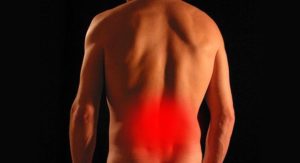HERNIAS IN ARIZONA WORKERS’ COMPENSATION
By Dennis R. Kurth, Associate Attorney
Workers’ Compensation Specialist
 Hernias, a very common type of industrial injury, are treated differently from all other injuries in the Arizona workers’ compensation law. They are divided into two categories under the statute depending on whether they are purely traumatically-caused or whether a pre-existing abdominal wall weakness contributes to the hernia. (A.R.S. §23-1043(1) and (2)).
Hernias, a very common type of industrial injury, are treated differently from all other injuries in the Arizona workers’ compensation law. They are divided into two categories under the statute depending on whether they are purely traumatically-caused or whether a pre-existing abdominal wall weakness contributes to the hernia. (A.R.S. §23-1043(1) and (2)). “Real traumatic” hernias or “class one” hernias, are those caused by a direct injury to the abdominal wall, whether by a strain from lifting, external force, or otherwise, which allows the viscera to protrude and where there is no proof of a pre-existing weakness such as a prior hernia or congenital defect.
These hernias are treated like almost all other injuries and the claimant’s burden of proof is to establish only that the work activity contributed to the development of the hernia. Temporary compensation benefits for real traumatic hernias are the same as for all other injuries with no monthly limit on indemnity benefits.
“Class two” hernias encompass all other hernias and are the result of a combination of a work-related strain and a pre-existing abdominal weakness. Apparently, the drafters of this legislation felt that such hernias would be much more ubiquitous than real traumatic ones and because not solely the responsibility of industry, deserving of only limited compensation.
The drafters also added some additional requirements, beyond the normal burden of proof, to these types of hernias: (1) the immediate cause must be a “sudden effort or severe strain or blow”; (2) that the descent of the hernia immediately followed the cause; (3) that the cause was accompanied by severe pain; and, (4) that the pain was so severe that the claimant reported it immediately to one or more persons. (A.R.S. §23-1043(2)(A-D)).
Fortunately for claimants, because the workers’ compensation law must be liberally construed, it is not necessary to establish every requirement to the letter and case law under the statute has softened the requirements considerably. For example:
the statute has softened the requirements considerably. For example:
 the statute has softened the requirements considerably. For example:
the statute has softened the requirements considerably. For example: - Immediate descent means anything from several minutes to several days.
- Severe pain, a very subjective standard, can mean some pain or even no pain.
- Immediate communication to one or more people means within a reasonable time.
All of these matters of proof are questions of fact for the ALJ. The distinction between the two classes of hernia is a medical question to be addressed by the doctors.
If all of the statutory criteria for class two hernias are met and medical testimony establishes a causal relationship to the work activity or strain, compensation is payable for only two months, which is usually sufficient to cover the normal recovery time after surgery. The two-month compensation limit, however, does not apply if the treatment/surgery leads to complications that delay recovery and/or necessitate further medical treatment. An example of such a complication could be an infected mesh that requires further surgery.
Workers’ compensation carriers tend to treat all hernias as class two hernias without regard to the details. Usually, a claimant will have to successfully litigate the issue to have a compensable class one hernia. Such injured claimants should consult a worker compensation specialist to see if their injury can be classed as a real traumatic hernia rather than a class two hernia.
